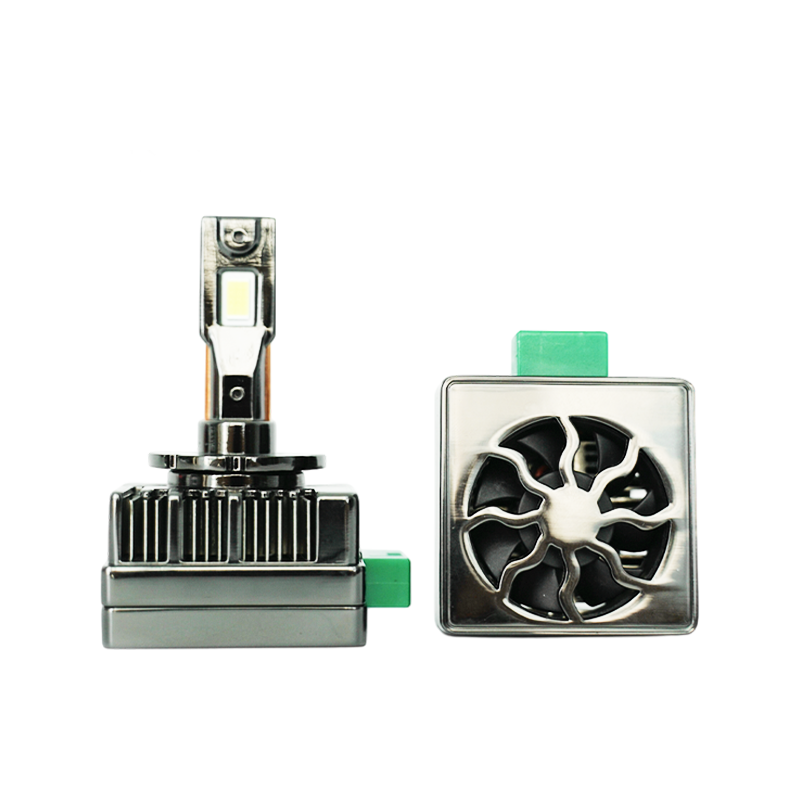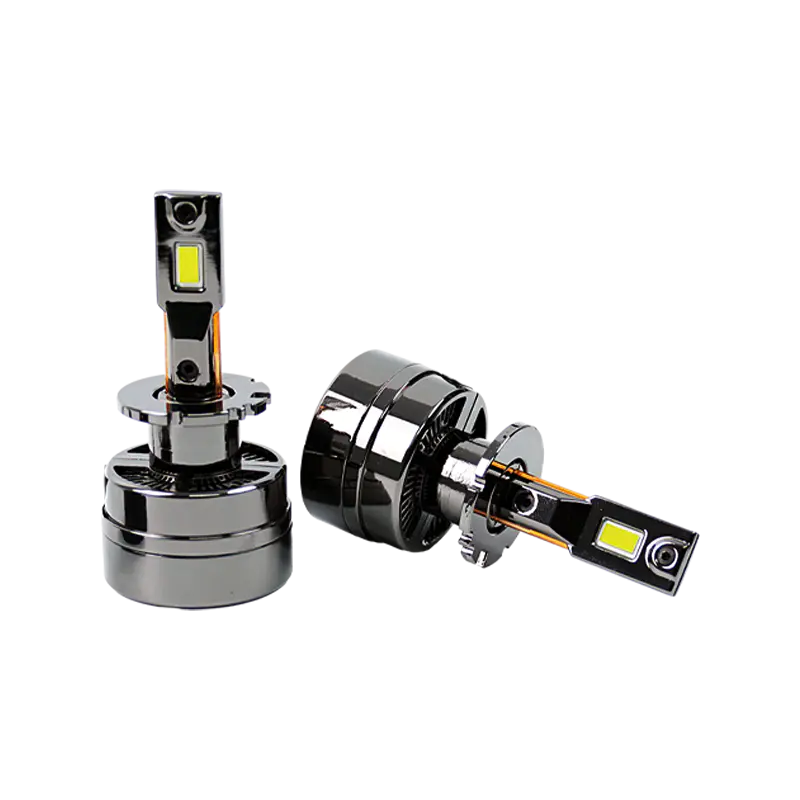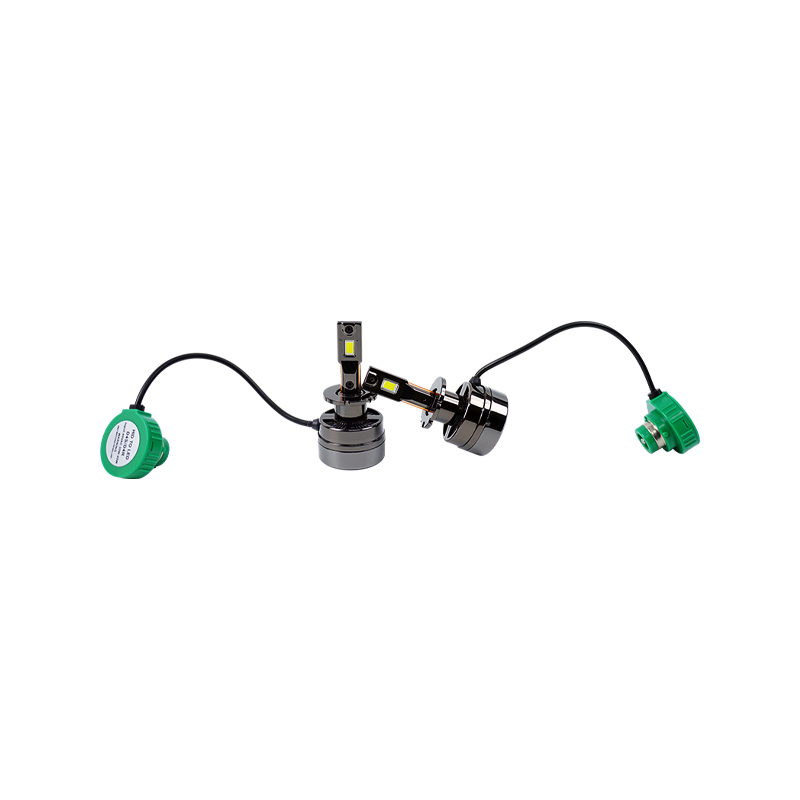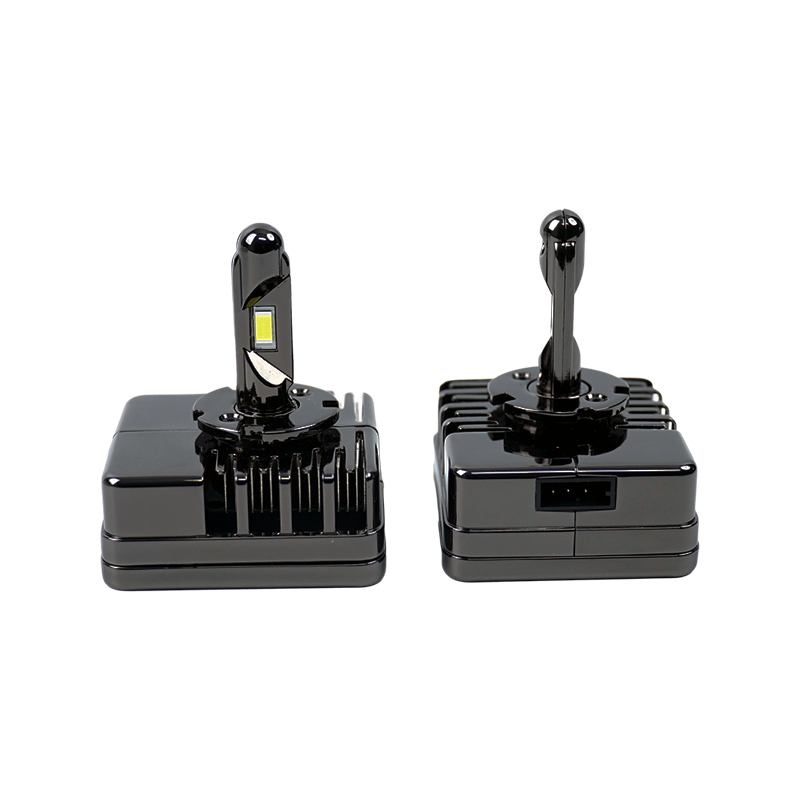In the iterative upgrade of automotive lighting technology, advanced single-beam LED headlight bulbs have become the mainstream of the market with their high efficiency and energy-saving characteristics. Among them, strong heat dissipation performance can be regarded as the core code for such products to achieve long life and high reliability, which fundamentally solves the pain point of frequent replacement of traditional lighting products and reshapes the user experience of automotive lighting.
The luminous core of advanced single-beam LED headlight bulbs, LED chips, will inevitably generate a lot of heat energy in the process of converting electrical energy into light energy. If the heat dissipation system cannot timely vent the heat, the continuous increase in chip temperature will cause thermal stress deformation of the lattice structure, directly affecting the electronic transition efficiency of semiconductor materials, and then causing light decay and color temperature shift. This thermal runaway state not only greatly reduces the lighting effect, but also accelerates the oxidation of the solder joints inside the chip and the aging of the packaging materials, greatly shortening the product life. The advanced single-beam LED headlight bulb strictly controls the operating temperature within the safety threshold through an innovative heat dissipation architecture, effectively delaying the physical and chemical aging process of key components, laying the foundation for long-life operation.
Its heat dissipation system adopts multi-dimensional collaborative design, and reflects the wisdom of precision engineering from material selection to structural layout. The heat dissipation substrate usually adopts metal-based composite materials with high thermal conductivity to quickly conduct the heat generated by the chip. The external heat dissipation fins are optimized by bionics to maximize the air contact area in a limited space and diffuse the heat into the environment by the principle of convection heat dissipation. Some products are even integrated with a micro heat pipe system to achieve ultra-efficient heat transfer through a phase change heat transfer mechanism, which increases the heat dissipation efficiency several times. This systematic heat dissipation solution allows the bulb to maintain a stable operating temperature even under high-intensity use for several hours in a row, avoiding performance degradation caused by overheating.
The long life characteristics bring significant economic and social benefits to advanced single-beam LED headlight bulbs. For car owners, reducing the need to frequently replace bulbs means reducing maintenance costs and time costs. Traditional halogen bulbs may need to be replaced every year, while advanced single-beam LED headlight bulbs have a long life advantage supported by heat dissipation technology, and the service life can reach several years or even longer, greatly reducing the hidden expenses of vehicle maintenance. Reducing the frequency of bulb replacement also indirectly reduces resource consumption and waste emissions in the manufacturing process, which is in line with the concept of green development. From an industrial perspective, the extension of product life has increased users' trust in LED lighting technology and promoted the sustainable development of the automotive lighting industry.
The long life advantage forms a synergistic effect with other performance advantages. Stable operating temperature ensures the consistency of LED chip luminous performance, avoids brightness fluctuations and color temperature drift caused by thermal decay, and always provides drivers with a clear and stable lighting environment. This stability is particularly important in complex road conditions and extreme climatic conditions. Whether it is a dark night with heavy rain or a wilderness filled with sand and dust, advanced single-beam LED headlight bulbs can rely on reliable heat dissipation performance to continuously output high-quality light sources and ensure driving safety. In addition, the long-life design reduces the performance degradation of the product throughout its life cycle, allowing the lighting system to maintain its initial high brightness and precise light distribution effect for a long time, effectively improving the comfort and safety of night driving.
From research and development to application, the long life characteristics of advanced single-beam LED headlight bulbs show the value of technological innovation. It is not only the result of a breakthrough in heat dissipation technology, but also an important symbol of the automotive lighting field moving towards intelligence and efficiency. With the continuous advancement of technology, future advanced single-beam LED headlight bulbs are expected to achieve greater breakthroughs in heat dissipation performance and life performance, bringing users a longer-lasting and higher-quality lighting experience, while promoting the entire automotive lighting industry to a higher level of development.

 English
English Español
Español عربى
عربى русский
русский












